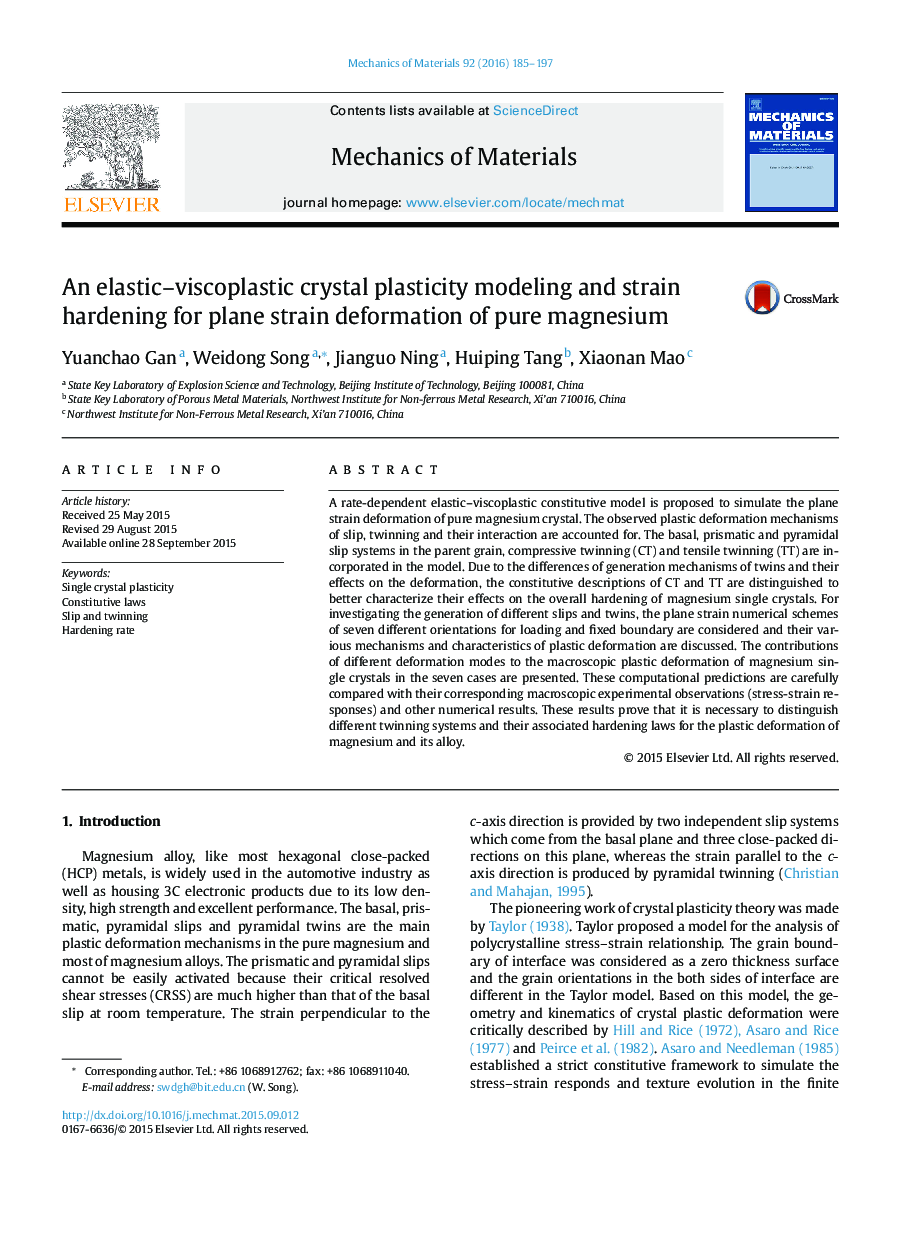| Article ID | Journal | Published Year | Pages | File Type |
|---|---|---|---|---|
| 797490 | Mechanics of Materials | 2016 | 13 Pages |
•The differences between tensile and compressive twins are distinguished.•The crystallographic reorientation due to twinning is considered.•The numerical simulations of seven orientations are carried out.•The activity and influence of each deformation mechanism are identified.
A rate-dependent elastic–viscoplastic constitutive model is proposed to simulate the plane strain deformation of pure magnesium crystal. The observed plastic deformation mechanisms of slip, twinning and their interaction are accounted for. The basal, prismatic and pyramidal slip systems in the parent grain, compressive twinning (CT) and tensile twinning (TT) are incorporated in the model. Due to the differences of generation mechanisms of twins and their effects on the deformation, the constitutive descriptions of CT and TT are distinguished to better characterize their effects on the overall hardening of magnesium single crystals. For investigating the generation of different slips and twins, the plane strain numerical schemes of seven different orientations for loading and fixed boundary are considered and their various mechanisms and characteristics of plastic deformation are discussed. The contributions of different deformation modes to the macroscopic plastic deformation of magnesium single crystals in the seven cases are presented. These computational predictions are carefully compared with their corresponding macroscopic experimental observations (stress-strain responses) and other numerical results. These results prove that it is necessary to distinguish different twinning systems and their associated hardening laws for the plastic deformation of magnesium and its alloy.
